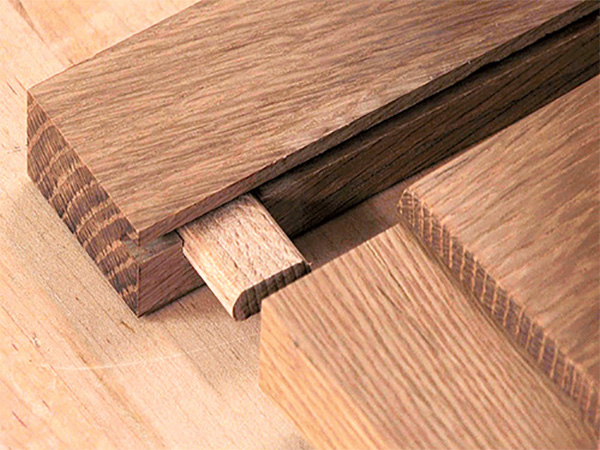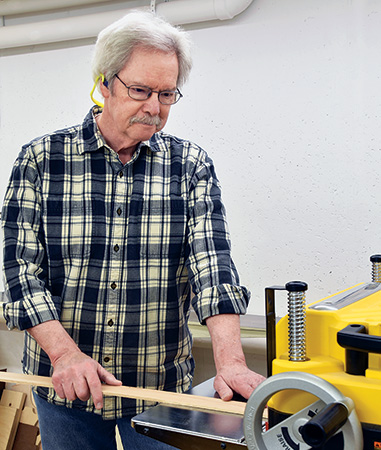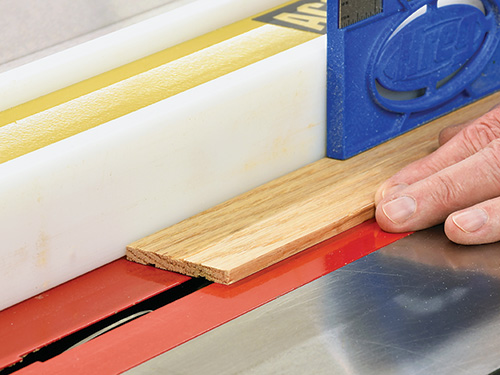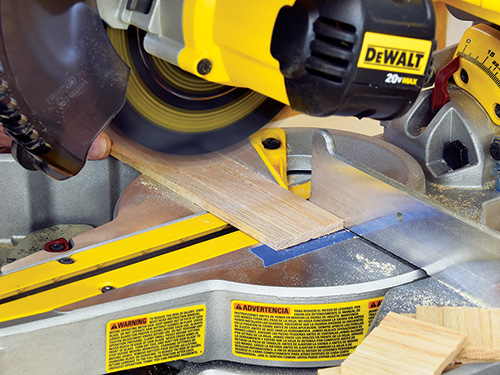
The Festool Domino and Rockler Beadlock systems are designed to use proprietary loose tenons; you just buy a bag of whatever size you need and you’re good to go. But you can also make your own — a necessity for mortises not sized to anything you can find ready-made. This is an easy process, and it lets you turn out tenons in any quantity you want.
No matter what wood you’ve used for your project, even soft pine, always use hardwood tenons for strength. Beech, maple and oak are good choices.

Begin by cutting the tenon stock to width and then planing it to thickness to match your mortise widths.
Before cutting your tenons to length, it’s a good idea to cut some glue relief grooves. A tight-fitting tenon can compress glue in the bottom of a mortise, creating a piston action that makes it hard to insert the tenon or prevents it from seating properly. (Or both.) Relief grooves give that compressed glue somewhere to go.

Set your table saw to cut a very shallow groove, about 1/16″. In making tenons for the 1-1/2″ mortises I created with the router in the previous section, I set the table saw fence to cut a groove down the center of the stock on the first side, then reset the fence to cut a pair of evenly spaced grooves on the other. I just ran the workpiece through, flipped it around and did it again for three grooves total. Plenty for glue relief.

If you’re making tenon stock for squared mortises, all you need to do is cut individual tenons to length and you’re done. For round-ended mortises like the one cut with the router earlier, simply install a small roundover bit in your router table and run the stock through to nicely round the edges before heading to the miter saw.





